Apple Spice Cake
Teatime!
Sometimes, just sometimes, apple shakes it’s self effacing, country bumpkin act and mischievously grants us a brief glimpse of it’s real abilities. Apple’s role in this recipe is to act first as an elegant flavour prism, and second as a humidifying agent. Combining baked and dried apple subtly, yet notably, separates the high flavour notes of cinnamon, cloves and nutmeg in this moist, light cake, thus affording peak gustatory excitement.
Contra intuitively, black pepper functions as a gentle flavour ‘binding agent’ that prevents each spice’s characteristic flavour from radiating too brightly, thereby overpowering it’s neighbors. Effectively, black pepper allows the use of reduced quantities of cinnamon, cloves and nutmeg, and provides apple’s distinctive, individual flavour a chance to survive instead of disappearing into self sacrificing obscurity as it so often does in this type of Spice Cake recipe.
I mean, how often does Apple Spice Cake or Carrot Cake actually taste of their respective fruit or vegetable? Invariably, the heavy spice load of traditional recipes dominates the grated vegetable or pureed fruit, which is effectively reduced to simply providing moistness and humidity to the final baked item.
This recipe reduces the generally overwhelming, yet publicly expected,
spice load. It uses the customary baked apple (both as whole pieces and puree),
but includes rehydrated, dried apple to emphasize the overall apple flavour.
Baking your own apples (if the cook has time available) yields a superior
product to the often bland, commercially available, tinned cooked apples.
Tart cooking apples generally provide the best taste and flavour in both the cooked and dried fruit. I prefer to dry my own apples as this gives full control over end product quality and saves costs. Beneficially, home drying avoids that unpleasant sulphur dioxide background taste so distressingly particular to most non-organic, commercially dried fruit.
Sulphur dioxide is used industrially as both a preservative (due to its
strong disinfectant action) and a bleaching agent (to keep the colour of the
final product bright and vibrant) by chemically binding with certain phenolic
compounds in the plant tissue, thus preventing browning and discoloration (see
the below discussion on enzymatic browning). Additionally, the American Food
and Drug Administration estimate that about 5% of asthmatics are at risk of
suffering an adverse reaction to sulphur dioxide. Although not an asthma
sufferer, I try to avoid ingesting sulphur dioxide. The aggressive chemical reactivity
cannot in the long run be good to the body on a biochemical level.
Oven drying is the quickest method of obtaining dried apple rings or wedges. Dipping the freshly peeled and cut fruit in a simple solution of citric acid in water keeps the wedges white during the drying process and prevents the unsightly browning that occurs when oxygen is present. Additionally, oven drying is also an effective and fast way in which to preserve apples that may have exceeded their prime eating condition.
Important side notes:
- Let the iced cake stand one day, if at all possible. The flavours meld, mature and improve significantly.
- The roasted, chopped almonds are mandatory and non-negotiable for the icing.
APPLE SPICE CAKE
Recipe yields:
10 – 12 Portions
|
Preparation time:
± 25 minutes
|
Baking time:
40 min
|
Difficulty level:
Easy
|
Special Equipment Required:
1
x 22cm Ring cake pan
1
x Kitchen Aid or Kenwood Chef electrical table top mixer machine
Ingredients:
Eggs, extra large
|
2
|
Water, cold
|
30ml
|
White sugar
|
150g
|
Sunflower oil
|
250ml
|
Cooked apple: ½ puree &
½ chunks
|
250g
|
Dried apple wedges, roughly
chopped
|
50g
|
Boiling water
|
100ml
|
Cake / general purpose
flour
|
180g
|
Bicarbonate of soda
|
5ml
|
Ground cinnamon
|
5ml
|
Salt
|
2.5ml
|
Ground cloves
|
1.2ml
|
Ground nutmeg
|
1.2ml
|
Fine black pepper
|
0.5ml
|
For the icing:
|
|
Full fat margarine / salted
butter
|
25g
|
Soft brown sugar
|
15ml
|
Icing sugar, twice sifted
|
125g
|
Salt
|
1.2ml
|
Vanilla essence
|
5ml
|
Boiling water
|
± 30ml
|
For decoration:
|
|
Whole, blanched almonds, well
roasted & roughly chopped
|
10
|
Method:
- Add the boiling water to the chopped, dried apple wedges and set aside, covered, for ± 30 minutes to rehydrate.
- Grease and flour the cake pan very well. Set aside until needed.
- Beat the eggs and water thoroughly together at high speed in the mixer bowl until light and creamy; using the machine’s flat, ‘K-paddle’ attachment.
- Slowly add the sugar next whilst continuing to whip the egg mixture at high speed.
- Reduce the mixer speed to medium high. Add the oil in a thin stream to the sugar and egg mixture. The resulting combination will lose some of it’s original volume. This is in order.
- Remove the mixer bowl from the mixer. Scrape down the sides. Add the apple puree, chunks and dried apple pieces along with it’s soaking liquid. Mix the components with a rubber spatula until just combined.
- Sift the flour, bicarbonate of soda, cinnamon, salt and spices together three times. Add the flour mixture in two batches to the mixer bowl. Mix with a rubber spatula in figure eight motions until well combined.
- Pour the batter into the prepared cake pan. Shake the pan vigorously two or three times to level the batter and remove any trapped air bubbles.
- Bake 40 minutes at 165°C (330°F) in a preheated convection oven or 50 – 55 minutes at 180°C (355°F) in a normal, static oven.
- Remove the cake from the oven and allow to cool for 20 – 25 minutes in the tin before turning it out carefully onto a suitable wire rack. Allow the cake to cool to room temperature before icing and decorating it.
- Sift the icing sugar and salt into a medium large, heat proof mixing bowl. Make a depression in the middle of the mound. Add the vanilla essence. Do not mix.
- Heat the margarine / butter and brown sugar together in a small pan over medium heat until the sugar is molten and quite runny. Stir regularly to prevent the sugar from charring.
- Add the hot margarine and brown sugar liquid directly, and without hesitation, to the depression in the icing sugar mixture. Using a balloon type wire whisk, start whisking slowly from the center outwards in expanding circles to gradually incorporate the powdered icing sugar into the growing central puddle. The mixture will become very stiff once all the powder is incorporated. The stiff icing will soon clog the wires – and collect in the center – of the whisk. Use the handle of a teaspoon to remove clumps of icing from inside the whisk and between the wires.
- Start adding table spoons of BOILING water to the stiff icing. Whisk the softening icing very well and rapidly between the water additions. Switch to using tea spoons of boiling water when the warm icing starts to loosen in texture. Add sufficient boiling water to adjust the icing’s consistency until it resembles that of golden syrup.
- Immediately pour the warm icing in an even, narrow ribbon uniformly over the cake so as to cover the entire surface and allow some icing to run down the sides of the cake. Work fast as the icing will start to set quickly as it cools down on the surface of the cake.
- Evenly sprinkle the chopped, roasted almonds over the surface of the cooling icing on top of the cake
Comments:
- Seriously consider using home baked apples for this recipe as opposed to commercially tinned apple pieces. The taste and flavour of home baked apples is incomparable. Any leftover baked apple can be frozen and makes excellent Apple Crumble Tart. A brief recipe for baked apples is provided below.
- Do not dally with the application of the icing once prepared, as it depends on it’s runny consistency when still warm to uniformly coat the cake as it is applied.
Dried Apple Wedges & Rings
The sun drying of fruit is an ancient practice as old as modern Man himself. It was one of the most popular techniques used by ancient peoples for food preservation in times of abundance. Dried fruit had high commercial and social value in the ancient world, over and above their primary culinary value and use. The remains of dried figs (as funary offerings) were found in Egyptian pyramids and ancient Romans ate staggering quantities of raisins as well as using it as a premium barter currency.
- Concentrated flavour and natural sweetness,
- High dietary fiber content and a host of vitamins, co-factors and mineral supplements,
- Improved and controlled moisture levels and humectancy in the final baked product,
- Texture and structure when used whole or partially processed / chopped, and
- Some anti-microbial activity in the final baked product through the presence of fruit acids such as malic, tartaric and citric acids.
The generally undesirable browning of fresh, uncooked foods such as apples, bananas, mushrooms, lettuce and potatoes on bruising or cutting, is enzymatically driven from within the plant tissue itself, primarily as a natural, chemical defense against insect predation and microbial attack. The discoloration is caused on a cellular level by three elements:
- Colourless single & double ring, reactive phenolic compounds kept in the cells’ storage vacuoles,
- Certain plant enzymes in the surrounding cellular cytoplasm, and
- Atmospheric oxygen.
In the kitchen, enzymatic browning can be discouraged by several means. The easiest, and most widely used, method is to coat cut surfaces with an acid: usually lemon or lime juice (citric acid) – or in a pinch, diluted vinegar (acetic acid). High acidity dramatically slows the oxidation rate (catalysed by the plant enzymes) of the oxygen exposed, defensive phenolic compounds, but does not stop it entirely.
Alternative
methods include chilling the food below 4°C / 40°F, covering cut pieces with
cold water (limiting the availability of oxygen) or – in the case of sliced lettuce
– immersing it for 3 minutes in water kept at 47°C / 115°F. Boiling temperatures will also destroy the
plant enzymes causing browning, but – perversely – may encourage phenolic
oxidation in the absence of enzymes. Several sulphur compounds will combine
with the ‘offending’ phenolic compounds and block their reaction with the
enzymes causing browning. Sulphur dioxide (as mentioned earlier in this post)
is commercially widely applied to dried fruit for this very purpose: to
preserve natural color and flavour.
This
recipe calls for citric acid to prevent enzymatic browning when producing the
required dried apple wedges used in the Apple Spice Cake preparation described
above. Citric acid is odorless, colorless, quite acidic, and has a simple,
reduced citric taste compared to lemon juice. This flavour simplicity is
important in producing dried apple wedges with a pure, ‘uncluttered’ apple
taste and flavour so that it will be able to resist the easily overpowering
spice combination used for the above Apple Spice Cake recipe.
Citric
acid is available at almost any well stocked pharmacy, but can also be found at
outlets specializing in the sale of spice and herb ingredients to the public
and or food industry. Shops supplying Chinese and or Indian food ingredients,
herbs and spices sometimes also stock it, usually labeled as “sour salt”,
“lemon salt” or “citric powder”. It is an essential ingredient for preparing
lemon pepper seasoning.
Ingredients:
Baking apples, e.g. Granny
Smith or Bramley
|
5
|
Cold water
|
500ml
|
Citric acid powder
|
10ml
|
Method:
- Dissolve the citric acid in the water. Use a glass, stainless steel or polymer container. Do not use ferrous, cuprous or tinned equipment, the citric acid will dissolve trace amounts of those metals and impart an unpleasant, metallic taste to the end product.
- Peel and core the apples. Steep 3 – 4 minutes in the citric acid solution. Cut each apple from top to bottom into 10 – 12 wedges. Steep the wedges for 5 minutes in the citric acid solution.
- Arrange the drainrd wedges in evenly spaced rows on a stainless steel, wire cooling rack in a suitably sized Swiss roll baking tin or sheet pan.
- Dry for 90 – 120 minutes at ± 75°C (±165°F) in a convection oven. Cool, transfer to a sealable storage container and store away from direct sunlight. Use within 3 weeks, as the dried fruit is perishable. Alternatively, freeze the dried fruit to extend it’s usability to 6 months.
- For dried apple rings: Slice the peeled, cored apples crosswise into uniform, ± 6mm thick rings. The use of a mandoline slicer is recommended. Continue as for dried apple wedges.
Baked Apple Wedges
Heat – through baking / roasting, boiling or frying – significantly modifies the colour, texture, flavour and nutritional value of fruit – apple being no exception. On a biochemical level, fruit are primarily composed of carbohydrates (in various forms) and water, with some sugars, pigments and minerals present in significantly lesser quantities. Importantly, little protein is present, thus simplifying the cooking of fruit substantially.
Cooking
temperatures softens the texture of fruit, increases it’s succulence and alters
the flavour and taste by:
- Partial dissolution of hemicelluloses and pectins (the ‘cement’ keeping cells together in plant tissue), leading to a general collapse in tissue structure,
- Disrupting cell membranes and releasing sugars, acids and flavouring molecules into the tissue moisture, making these agents more accessible to our taste buds, and
- Creating new molecules – and modifying existing compounds – through increased enzyme activity (until rising internal temperature eventually denatures them), mixing of cellular contents and general chemical reactivity, resulting in a more complex and ‘cooked’ flavour profile.
Ingredients:
Baking apples, e.g. Granny
Smith or Bramley
|
5
|
Water
|
60ml
|
Cassia bark
|
3 pieces
|
Whole star anise pods
|
1 small pod
|
Method:
- Peel and core the apples. Cut each apple into 8 uniformly thick wedges from top to bottom. Transfer the wedges to a glass or porcelain baking dish with a well fitting lid. Add the water and spices. Arrange the spices to be in-between the apple pieces.
- Bake covered for 75 minutes at 165°C (330°F) in a preheated convection oven or until soft, but not mushy.
- Allow to cool to room temperature. Discard the spices before use. Freeze any remaining baked apple for up to three months.
Sources:
Enzymatic browning: FOOD &
COOKING, An Encyclopedia of Kitchen Science, History and Culture; McGee,
Harold; Hodder & Stoughton; London; 2004.
Food browning: https://en.wikipedia.org/wiki/Food_browning,
Retrieved 06/12/2017.
Citric acid: https://en.wikipedia.org/wiki/Citric_acid;
Retrieved 10/9/2017.
Sulpher dioxide: https://en.wikipedia.org/wiki/Sulfur_dioxide#As_a_preservative;
Retrieved 10/9/2017.
© RS Young, 2017
– RECIPE INDEX PAGE –
Follow Me on Facebook
Note:
Post
updated on 2024.03.18 to include:
1.
The updated Recipe for downloading as a PDF file, and
2.
Recipe Title and Print Recipe, Recipe Index and Facebook & Pinterest follow
links.

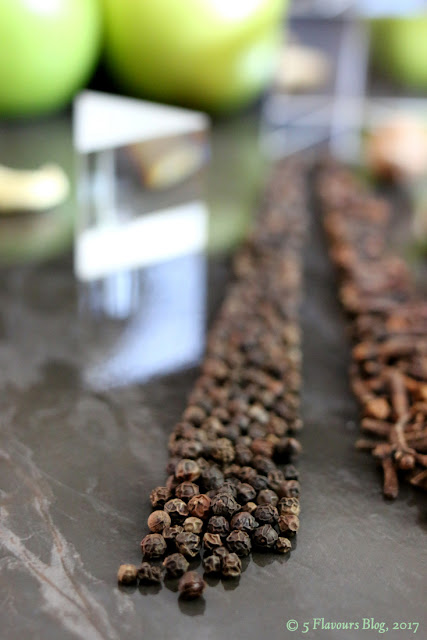

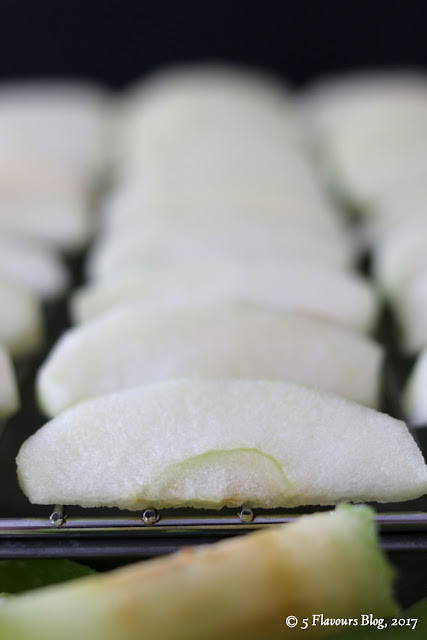
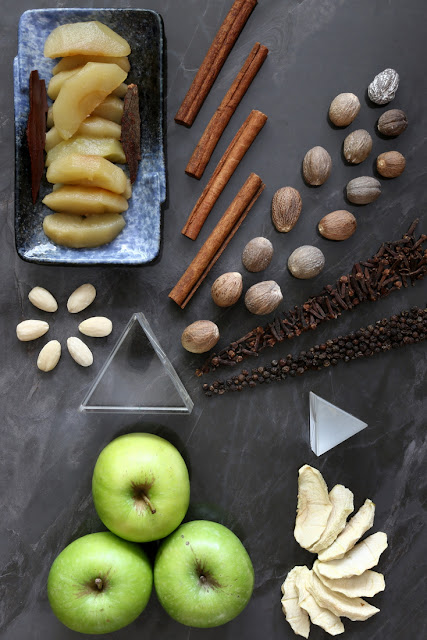

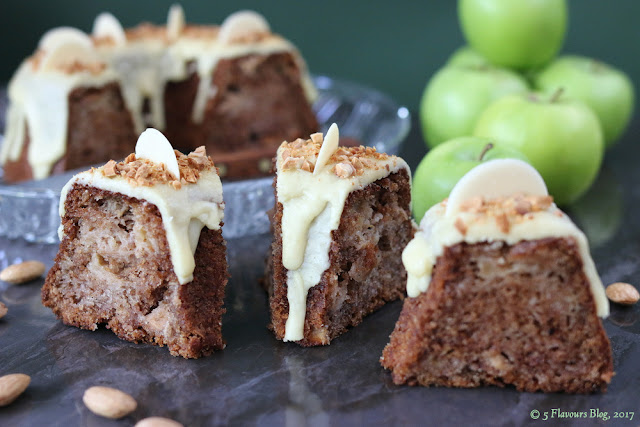
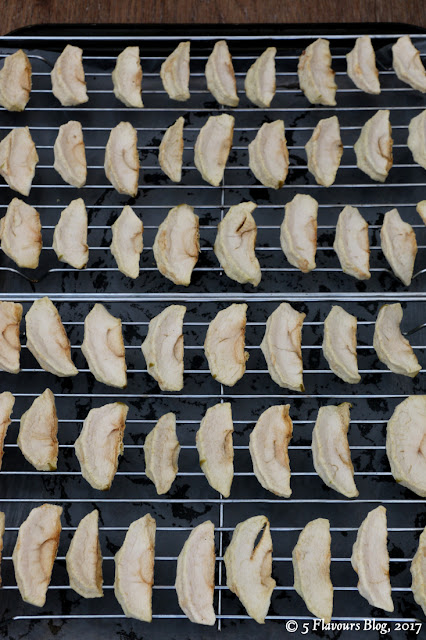

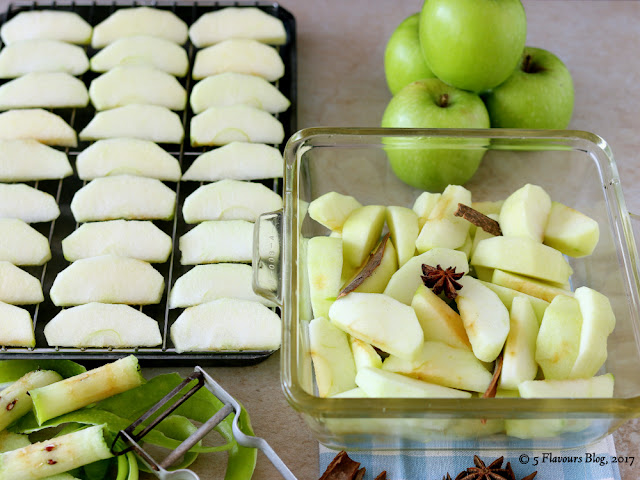

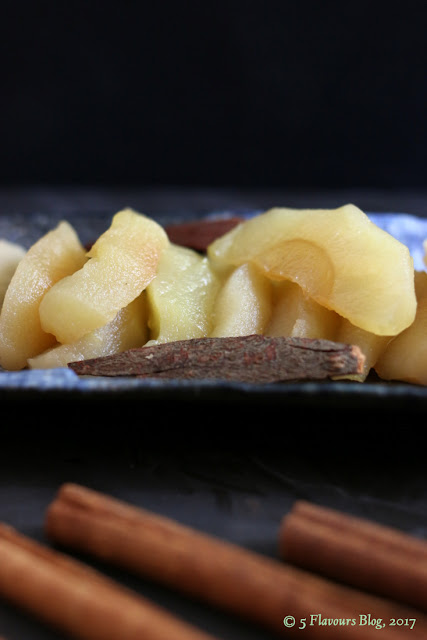
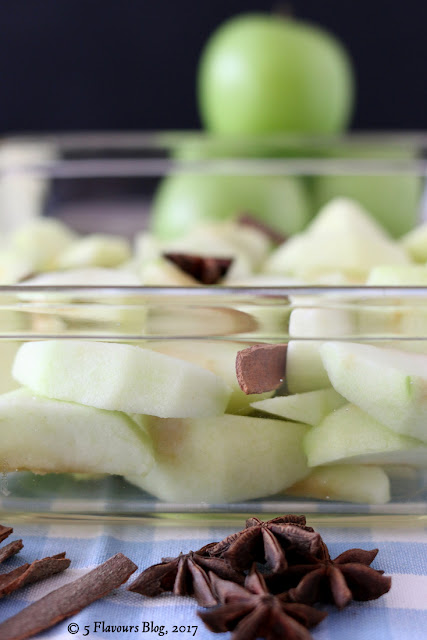

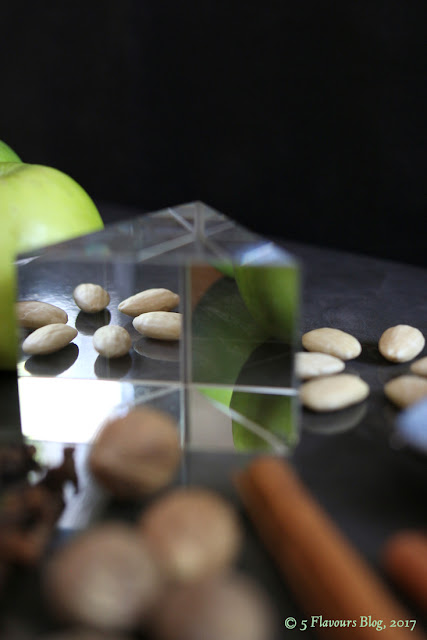

WOW! This apple cake looks so homey and comforting! I can't wait to try it ♥
ReplyDeleteHi Natalie
DeleteI hope you enjoy it as much as my family and I did.
Regards, Robert